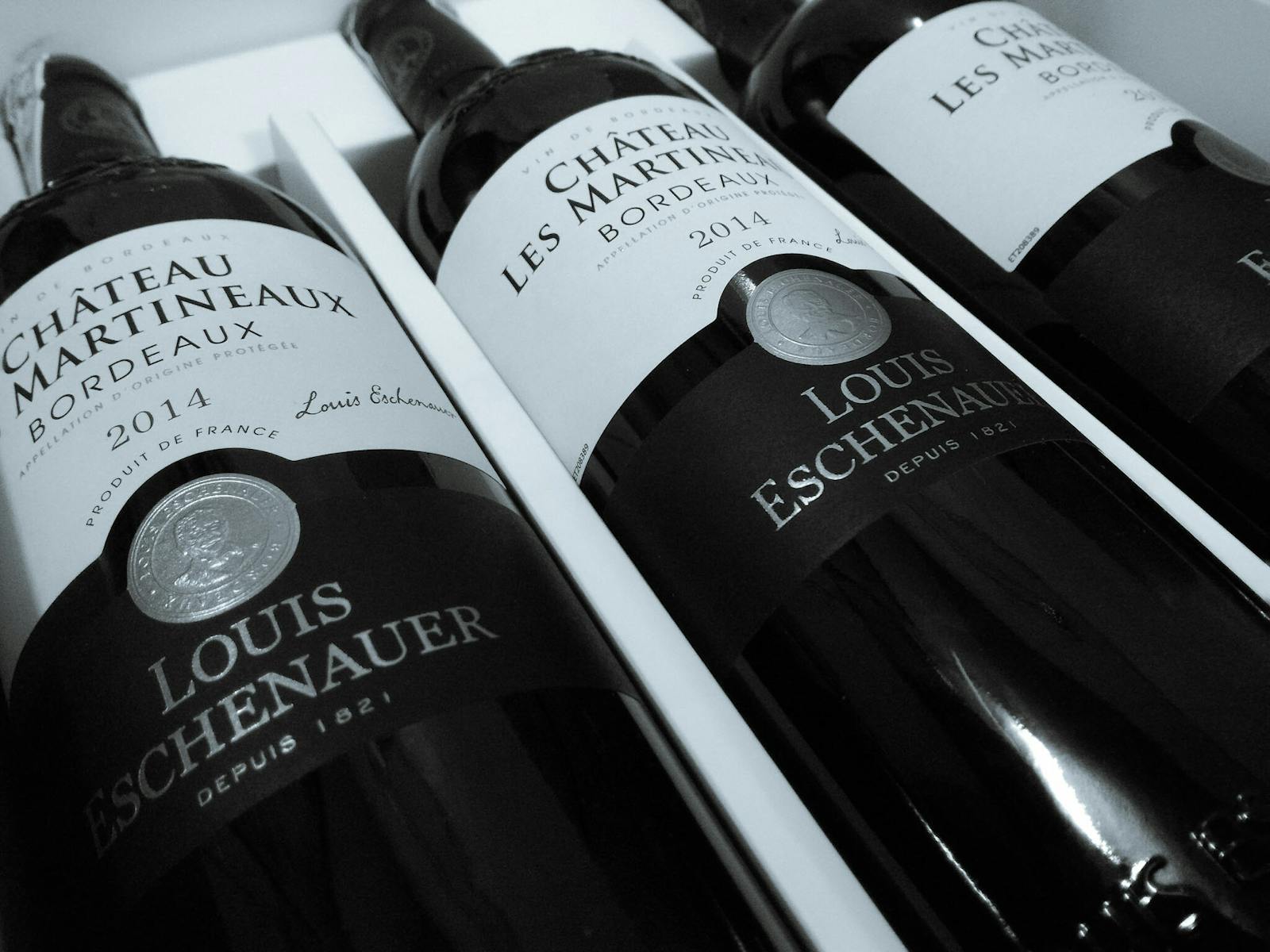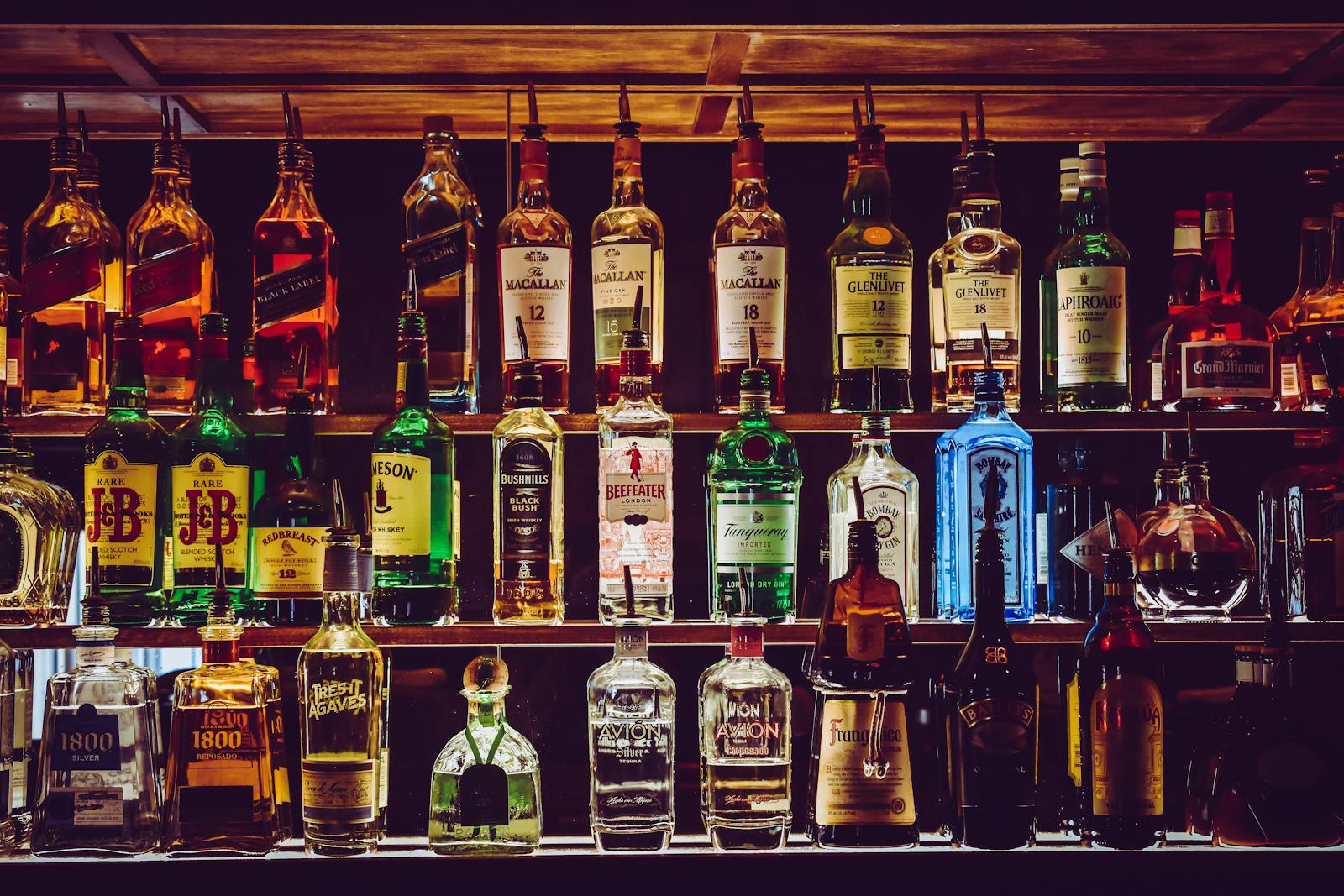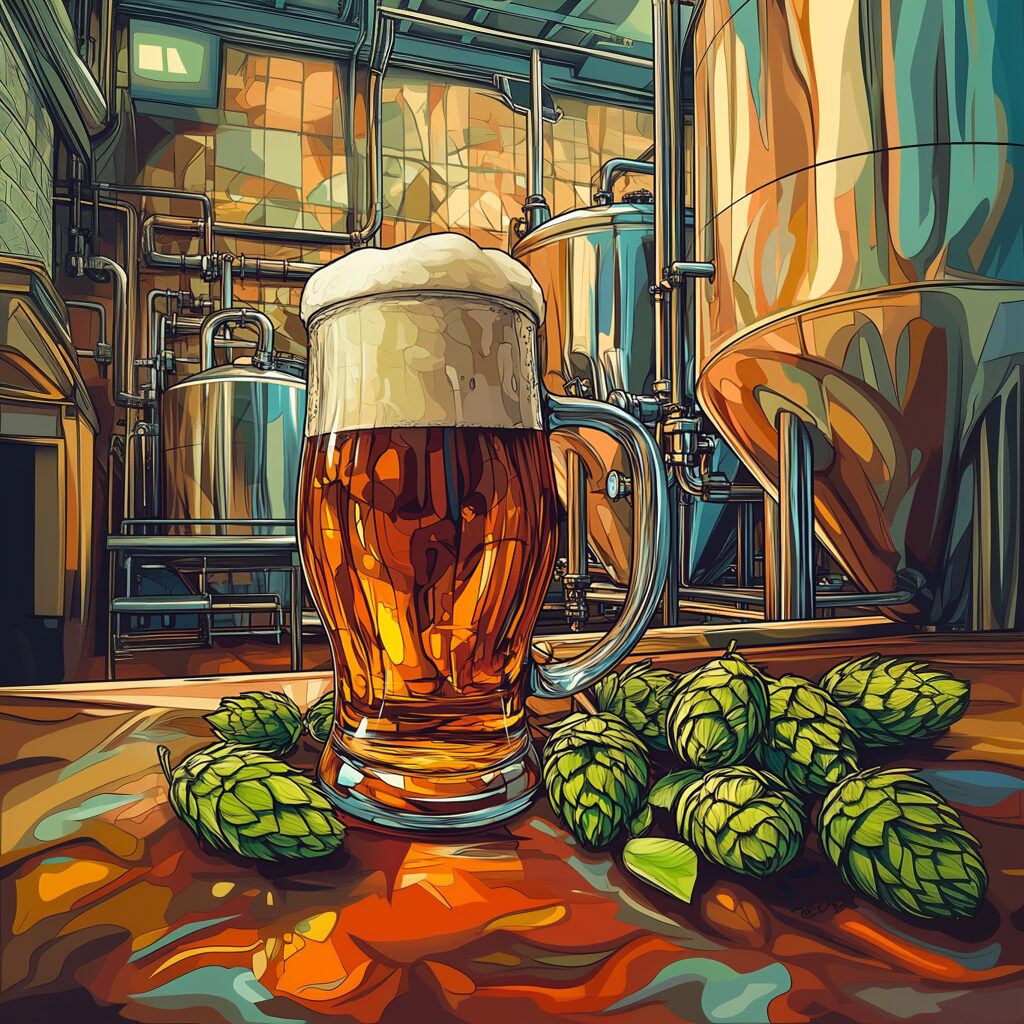Bordeaux Wine Overview
Ah, Bordeaux wine—it’s like an old friend that just keeps getting better with age. It’s got an elegance that’s hard to resist and a complexity that keeps you coming back for more. Whether you’re a wine nerd or just like a glass now and then, Bordeaux’s flavors and aromas have something for everybody.
Tasting Notes and Characteristics
So, what’s the deal with Bordeaux wines? For starters, they usually come in deep, rich colors and pack a punch in the flavor department. These wines are full-bodied and have a high tannin count, which means they can seem a bit astringent right off the bat. But the magic happens when the sweetness, acidity, and alcohol levels smooth out that astringency, leaving you with a surprisingly easy-to-drink wine. Here’s a cheat sheet for what to expect:
| Characteristic | Description |
|---|---|
| Body | Full-bodied |
| Tannin | High tannin, can be astringent |
| Acidity | Just enough to keep things interesting |
| Sweetness | From bone dry to sweet—take your pick |
If you’re curious about the finer details, you might wanna peek at my guide on the ultimate guide to wine.
Grape Varieties in Bordeaux
Ever wonder what gives Bordeaux its unique flair? It’s all about the grapes, my friend. In the red corner, we’ve got:
- Merlot (66%)
- Cabernet Sauvignon (22.5%)
- Cabernet Franc (9.5%)
- All the Others (2%)
And for the whites:
- Sémillon (45%)
- Sauvignon Blanc (43%)
- Muscadelle (5%)
- The Rest (7%)
Most Bordeaux reds mix these grape types, like a perfect cocktail in a single bottle. Fun fact: 99% of top Bordeaux wines are blends, but there are rebels out there—like the 100% Merlot bottles from Pomerol and St. Emilion (Bordeaux).
Over time, grape choices have shifted. Blame it on things like the pesky phylloxera bug and that nasty frost in ’56. Now, grapes like Cabernet Sauvignon, Merlot, and Cabernet Franc really shine, making Bordeaux what it is today. Got a hankering to know more about these unique grapes? Dive into my take on types of wine.
Classification of Bordeaux Wines
Ah, Bordeaux wines! They’ve got quite the story, so pull up a chair. We’re diving into how these bad boys are sorted like ranks in a royal family. Two big wigs stand out when choosing our fine selection: the old-school 1855 Classification and the Liv-ex Bordeaux Classification, each with their flair.
Historic 1855 Classification
Step back to the Bordeaux Wine Official Classification of 1855, where it all kicked off. Back then, wines got sorted from top dog to underdog, first to fifth growths. The cool kids on this list were chilling in the Médoc region, except our lone wolf, Château Haut-Brion, who hails from Graves (Wikipedia).
Now, if you’re a fan of those dusty old systems, you’re in for a ride because this one’s cemented in history, barely budged since the 19th century. The one time the system got a kick was in ’73. That’s when Château Mouton Rothschild climbed the ladder from second to first growth. Shoutout to Philippe de Rothschild’s persistent cheerleading on that front! But, don’t start thinking this system’s the freshest loaf on the shelf—many folks say it’s a bit of an old shoe, not always fitting today’s wine quality (Wikipedia).
| Growth Level | Example Estates |
|---|---|
| First Growth | Château Lafite Rothschild, Château Margaux |
| Second Growth | Château Montrose, Château Palmer |
| Third Growth | Château Lagrange, Château d’Issan |
| Fourth Growth | Château La Tour Carnet, Château Potensac |
| Fifth Growth | Château du Tertre, Château Haut-Batailley |
Liv-ex Bordeaux Classification
Enter the Liv-ex Bordeaux Classification in 2009—just what we needed for some fresh eyes on things. Out with the dusty old ways, in with a new look at market trends and what’s really topping the charts. It’s like giving the classic 1855 ranking a modern wardrobe make-over. We’re talking prices, critic scores, and keeping things real (Wikipedia).
While I can tip my hat to the class and style of the old system, truth is, the Liv-ex is where it’s at for keeping pace with today’s game. Updated prices, where they stand, and opinions from the grapevine (pun intended) give you the down-low on what’s good. This classification is your map through the maze of quality and value.
For the curious sippers eager to dip their toes into the Bordeaux wine waters, these sorting hats (yes, Harry Potter fans, I said it) can make picking a bottle way more fun. If you want to uncover even more about wine selections and brands, mosey over to my ultimate guide to wine. It’s like Hogwarts but for wine. Cheers!
Bordeaux Wine Regions
Bordeaux isn’t just a name tossed around at fancy dinners, it’s like the prom queen of the wine world. Wrap your head around the variety in Bordeaux, and you’ll surprise yourself at the next wine night. Let’s take a look at the ins and outs of this vinous playground. It’s split into two main spots: the Left Bank and the Right Bank. Each has a different vibe and distinct mixes of grapes.
Left Bank vs. Right Bank
The Gironde Estuary likes to play matchmaker—separating the Left Bank and Right Bank, each flirting with different grapes and leading to diverse personalities in the bottle.
| Feature | Left Bank | Right Bank |
|---|---|---|
| Dominant Grape | Cabernet Sauvignon | Merlot |
| Typical Blends | Cabernet Sauvignon, Merlot | Merlot, Cabernet Franc, Cabernet Sauvignon |
| Tannins | Goes heavy on tannins ’cause of Cabernet Sauvignon | Easy on tannins, with a fruity punch |
| Mouthfeel | Tough and chewy | Smooth sailing |
| Notable Appellations | Pauillac, Margaux, and friend’s others | Saint-Émilion, Pomerol, and their buddies |
Left Bank wines flaunt their Cabernet Sauvignon side, giving us those hearty, cheek-puckering tannins. Think Pauillac, where the bold brews leave a mark you won’t forget (Decanter).
Switch scenes to the Right Bank, where Merlot reigns supreme—think bold fruitiness and a softer feel. Perfect for anyone still finding their Bordeaux legs (Decanter).
Notable Bordeaux Appellations
Bordeaux isn’t just a single hit wonder; it sports several cork-popping regions renowned for killer wines. Here’s a sneak peek at some of the big shots:
| Appellation | Notable Characteristics |
|---|---|
| Château Lafite Rothschild | Among the greats. Packs deep flavors and can age like a champ. |
| Château Margaux | Grace under pressure, elegance, and complexity with a lot of Cabernet Sauvignon charm. |
| Château Latour | Muscles and depth that stand the test of time. |
| Château Haut-Brion | Mixes things up with Merlot; known for its indulgent richness. |
| Saint-Émilion | A blend of blends, mostly Merlot. Offers easygoing, fruity textures. |
| Pomerol | Known for lounge-worthy, velvety wines with lashings of Merlot. |
By cozying up to these regions and appellations, you pinpoint just the right Bordeaux wine for any mood or event. Whether you’re aiming for a Left Bank heavyweight or a Right Bank fruity fling, each bottle serves up a unique backstory that adds to Bordeaux’s wine chapter.
Evolution of Bordeaux Grape Varieties
Who knew the world of Bordeaux wines was like a soap opera of sorts, filled with drama, survival, and a touch of innovation? The grape varieties in this beloved region have been on quite the wild ride—thanks to history and some clever farming upgrades.
Impact of Historical Events
Let’s zip back to the late 1800s, a real doozy for Bordeaux. Picture this: vineyards attacked by the pesky phylloxera bug, gobbling up grapes like it’s their last meal. This bug didn’t just nibble; it chomped its way through many of the local grape kinds. The cavalry, led by Cabernet Sauvignon, Merlot, and Cabernet Franc, stepped up to save the day. These grapes managed to keep their ground when others, like Petit Verdot, Malbec, and Carmenere, were pushed to the wings.
The frost of 1956 was another icy villain. It nixed vineyards but reinforced the stronghold of our enduring grape heroes. If you’re in Bordeaux? You notice the climate’s always playing a sneaky role. Hot days are tempered by cooler, humid nights, perfect for grapes to get their ripening groove on and create wines that are deliciously balanced.
Newly Approved Grape Varieties
But wait, the plot twist! Bordeaux loves to shake things up. Come 2021, the scene welcomed new grape stars. Now, these leading roles are limited to just a little cameo appearance each—5% per vineyard and up to 10% in your finished wine mixtape.
| Grape Variety | Type |
|---|---|
| Arinarnoa | Red |
| Castets | Red |
| Marselan | Red |
| Touriga Nacional | Red |
These fresh faces bring fresh flavors, new pathways for winemakers to explore, and a dash of complexity that reels in wine lovers for more sips and more stories.
The twists and turns in grape history add a sprinkle of magic to enjoying Bordeaux wines. If you’re thirsting for a deeper dive into the colorful spectrum of wines, my insider’s peek at the ultimate guide to wine might just be your ticket. Whether you’re just sipping your first glass or you’ve got a cellar to rival Dracula’s, Bordeaux has tricks up its sleeve to keep you coming back.
Bordeaux Wine Blending
Blending is the secret sauce in making Bordeaux wines so special. Since 99% of top Bordeaux wines are mix-and-matched from different grape varieties, it’s no shock this method is a big deal in the area. I’ll dig into what makes classic Bordeaux blends tick and peek at how the style’s caught on beyond French borders.
Traditional Bordeaux Blends
Classic Bordeaux blends usually toss together at least two of the main grapes: Cabernet Sauvignon, Merlot, and Cabernet Franc. These mixes are like wine gangs, split into Left Bank and Right Bank blends, all about who’s the boss grape. Left Bank’s the Cabernet Sauvignon show, bringing bold, tannic wines with shelf life. Meanwhile, Right Bank’s all about Merlot or Cabernet Franc, making wines that are softer and packed with fruit vibes.
| Blend Type | Dominant Varietal | Characteristics |
|---|---|---|
| Left Bank Blend | Cabernet Sauvignon | Big, tannic, perfect for aging |
| Right Bank Blend | Merlot | Smooth, fruity, easy-going |
| Classic Blend | Multiple Varietals | Complex with layers of flavors |
These blends ain’t just a Bordeaux thing. Winemakers everywhere have jumped on the bandwagon, spreading the Bordeaux blend love globally. For a deeper sip, check our ultimate wine guide.
Blends Outside Bordeaux
As I was saying, folks outside Bordeaux have caught on to this blend magic. Various places have started mixing wines in the Bordeaux style. Different regions may tweak the recipe depending on local vibes, but they keep the basic blend mojo.
Take California, for example. In Napa Valley, winemakers are all about those Bordeaux grapes, creating blends with a fruit burst similar to France’s finest. And don’t overlook Australia’s Margaret River, where they mix Cabernet Sauvignon and Merlot with a little local twist.
These overseas blends show off their own balance and style, offering something fresh while nodding to classic Bordeaux. Curious about other wine types? Swing by our wine variety page.
Bordeaux wine blending isn’t just a technique—it’s an art that shows how to make top-notch wines. Whether you’re a die-hard fan of the original French styles or keen to taste the globetrotting versions, there’s always something new for wine lovers and newbies to enjoy. Cheers to that!
Sauternes and Barsac Wines
Sauternes and Barsac aren’t just names on a bottle; they’re key players in the sweet white wine scene coming straight out of Bordeaux. Imagine climates so perfect and grapes so noble that they’ve practically got halos. That’s your Botrytis cinerea at work, stirring up flavors that’ll make your taste buds do a happy dance.
Sweet White Wine Character
What happens when you mix Sauvignon Blanc, Sémillon, and just a dash of Muscadelle? Pure magic! The wines from these regions aren’t just sweet; they’re a fruity kaleidoscope featuring honey, juicy apricots, and a zing of citrus. The secret sauce? That fuzzy little friend, noble rot, which amps up the sugars but keeps things fresh and snappy with a nice, bright tang.
New to the Sauternes and Barsac vibe? Here’s a quick side-by-side:
| Characteristic | Sauternes | Barsac |
|---|---|---|
| Sweetness Level | Oh-so-sweet | Super sweet |
| Acidity | Zippy | Spunky |
| Primary Flavors | Honey, Apricot, Peach | Candied Citrus, Honey, Apricot |
| Aging Potential | Up to 50 years – super bottle granny! | Up to 30 years, rather spry! |
Whether it’s a wedding, holiday feast, or just your Tuesday night treat with a slice of cheesecake, these wines are the MVPs on the table. Oh, and if you’re wine shopping and baffled by the endless choices, swing by my guide on sweet white wine for shortcuts to sip bliss.
Notable Châteaus in Classification
A great wine usually has a great story, and back in 1855, Sauternes and Barsac got their places on the wine hall of fame. Château d’Yquem takes the cake—it’s the Grand Premier Cru legend that’s as legendary as the stories of any vintage epic. Don’t believe the hype? Just ask Wine Spectator right here.
Check out these superstar châteaus that have been keeping the legend alive:
| Château Name | Classification | Notable Features |
|---|---|---|
| Château d’Yquem | Grand Premier Cru | Famous for its rich complexity and age supremacy |
| Château La Tour Blanche | Premier Cru | Aromatic zing and a cozy richness that’s unforgettable |
| Château Lafaurie-Peyraguey | Premier Cru | Dancing notes of sweetness and tangy vibes |
| Château Coutet | Premier Cru | Consistently banging out fruity aromatic wonders |
These châteaus don’t just make wine; they craft experiences in a glass. So if you call yourself any sort of wine fan, these are must-tries. If you’re in the mood to expand your vino repertoire, pop over to my guide called the ultimate guide to wine—there’s a whole world waiting to be uncorked.
Affiliate Disclosure: This post may contain affiliate links. If you click and purchase through one of these links, we may receive a small commission at no extra cost to you. Thank you for your support!




